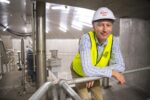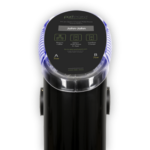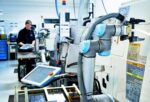AUSTECH 2019 – Spotlight on specialist technologies
Austech has always provided a comprehensive showcase of the latest innovations across every category of advanced manufacturing technology, and that tradition will continue at this year’s show, with two dedicated areas focusing on specialised technologies – the Digitalisation/Industry 4.0 Pavilion, and the Air Technology Pavilion. Having made its debut two years at Austech 2017, the Digitalisation Pavilion will again explore the latest technological developments at the cutting edge of manufacturing today. With the industry entering a new phase of rapid, radical change, often described as the Fourth Industrial Revolution, breakthrough advances in fields such as robotics & automation, interconnected devices and the Internet of Things, big data and Cloud computing are ushering in the era of the smart, connected factory. Amid ever-accelerating rates of technological change, and ever-growing competition, it is vital to not get left behind. The Digitalisation Pavilion will provide a snapshot of how the latest smart technologies are changing the very basis by which products are manufactured today, while offering insight into how these changes can benefit you and your business. Meanwhile the Air Technology Pavilion is a new section of the Austech exhibition, focusing on the latest state-of-the-art compressor equipment and associated air technologies. Encompassing compression technologies, air treatment and filtration systems, vacuum pumps and piping, as well as software applications and support services, the Air Technology Pavilion will offer a far-reaching showcase of a technology category that is vital to so many modern manufacturing businesses. “At Austech we’ve always strived to ensure we cover the entire spectrum of manufacturing technologies,” says Kim Banks, AMTIL’s Events Manager. “And we believe that grouping specific categories in dedicated areas is very helpful both to the exhibitors and to visitors at the show. The Digitilisation Pavilion was a great success two years ago, and we’ve always hoped to be […]










